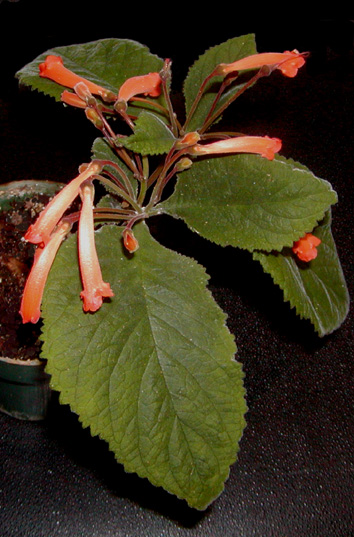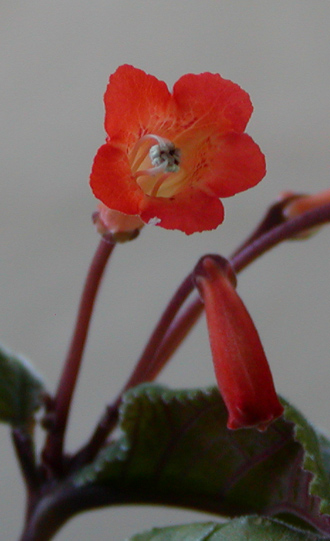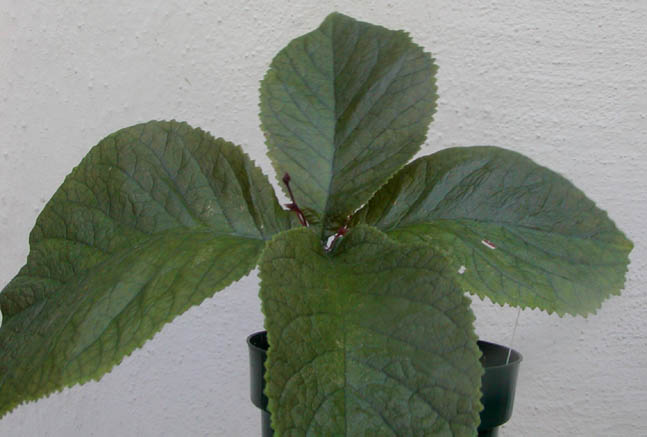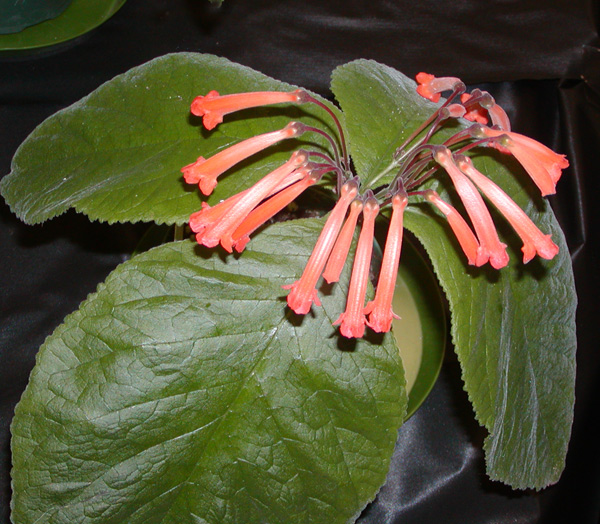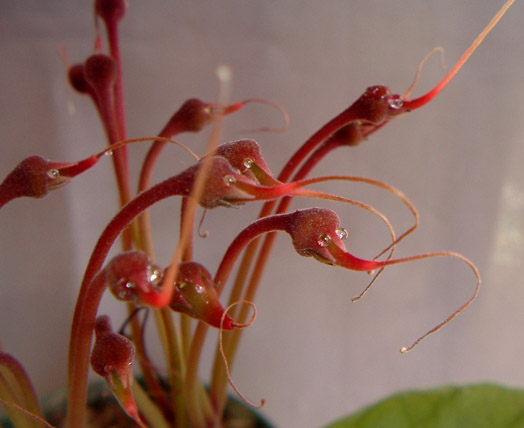Sinningia calcaria
Sinningia calcaria has an interesting habit, with short stems bearing 1-4 leaves and a cluster of orange or red flowers.
- S. calcaria in habitat
- Peloric flower
- Perils of growing outdoors
- Fruits
- Compared to Sinningia leopoldii
- Hybridization
- Feature table
- Publication
The picture at the right shows Katherine Henwood's plant of S. calcaria, photographed in San Francisco in October 2008. In 2007, she won Best in Show at the San Francisco Gesneriad Society show for a different plant of the same species.
Sinningia calcaria usually has one or two pairs of leaves on a thin stalk. Sometimes only one of the leaves develops, so that it resembles S. helioana. It can even flower in this form. The most obvious difference between the two species (which are not closely related) in that case is that S. calcaria bears its flowers from leaf axils, while S. helioana bears its flowers on a peduncle-like stem originating directly from the tuber.
